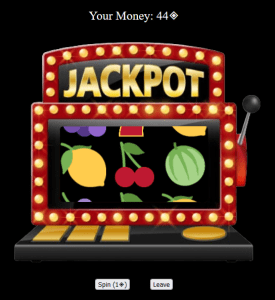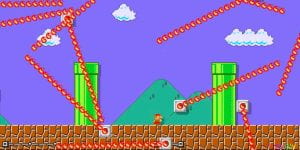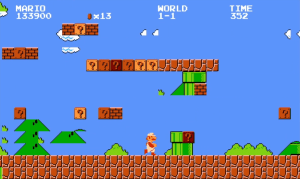Slots of Suffering

Slots of Suffering is a short artgame about the dangers of slot machine addiction, as represented through cruel money-management and addiction mechanics.
Artist’s Statement:
Slots of Suffering was primarily inspired by Natasha D. Schull’s book on machine gambling, Addiction by Design, and Lucas Pope’s 2014 artgame Papers, Please. The former book presents an ethnographic view of slot machine addicts in Las Vegas, and I found it shocking and pretty upsetting. I felt like this dark side of game design often goes overlooked, and wanted to make a game that attempts to spread awareness of the real-life implications of gambling addictions. Papers, Please shows, among other things, how financial concerns can lead people to be complacent in harmful systems. The way that Papers, Please represented the financial burden on your character, through payments for food and medicine for your family at the end of every day, was inspiring to me, and I realized I could make my point with a similar system.
I would also connect this game to the works of Brenda Romero, who has created several stripped-back analog games that try to make their point through their mechanics. “The mechanic is the message” is the name of the series. In my game, I wanted to represent addiction mechanically, rather than just telling the player “you are addicted to machine gambling.”
There are several shortcomings with my game that I did not have time to flesh out or rework. My biggest problems are that the representation of addiction is not perfect, and that playing the game “well” doesn’t reward you. I don’t want to misconstrue the way the complex condition of addiction works, but it is also a tricky one to model. An interesting symbolic way I tried to represent it was making everything but the slot machine visually drab, whereas the machine itself is bright and animated and fun. This was intended to represent the way addicts can move through life in a haze, just pushing on to the next hit. The more obvious interpretation of addiction in the game is that I don’t allow players to leave the casino until they’ve played enough. “Enough” depends on how much they’ve played before. This can be frustrating to the player that is forced to spend all their money at the slots, but I think this works to show how people can be frustrated being trapped in a cycle of addiction.
The other thing I’d want to expand on is actually rewarding the player for doing the right thing. When playing the machine just makes you lose money (and subsequently your home and family), the only winning move is not to play. Unfortunately, right now not playing isn’t a great outcome either. You just have to continually go to work and barely support your family, until you eventually lose to RNG. This doesn’t really reflect the message I want to send, so having some sort of good ending for not playing would help make the message more clear.
I chose to make this game in basic HTML and JavaScript so that it would be playable on any device, and quick for me to develop. The gameplay consists entirely of just pressing buttons, so this was a good fit.
Thank you for playing!



